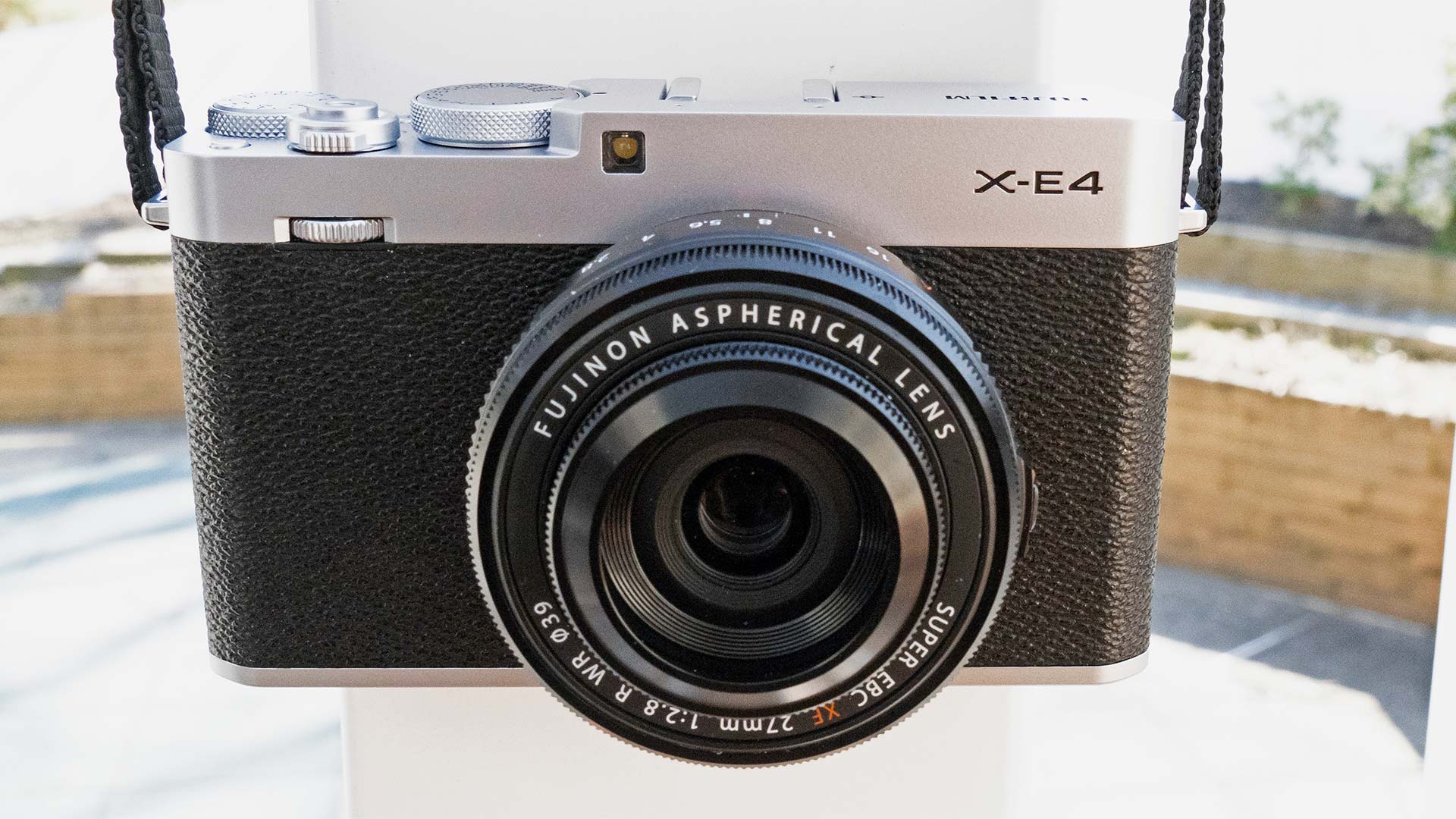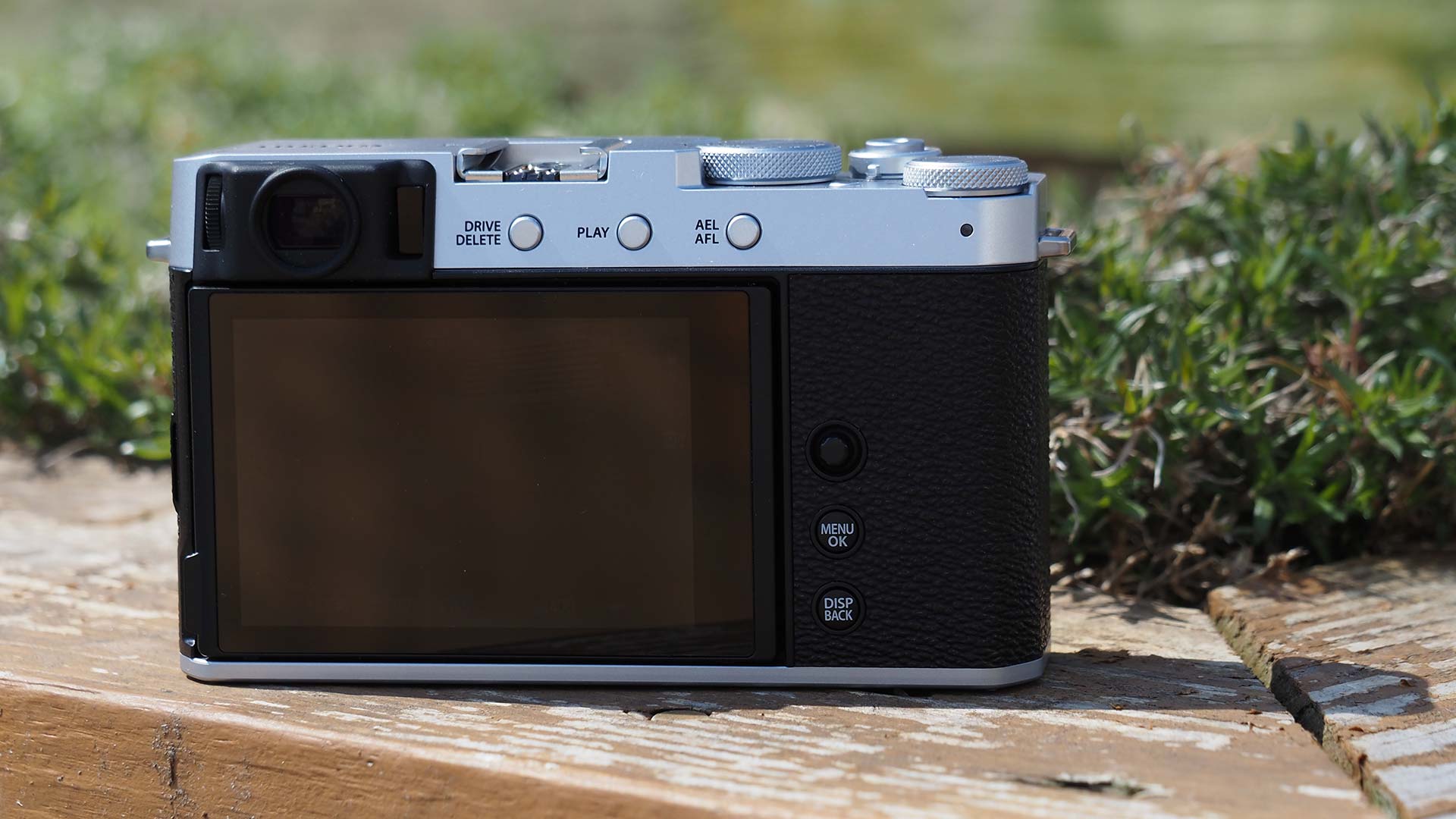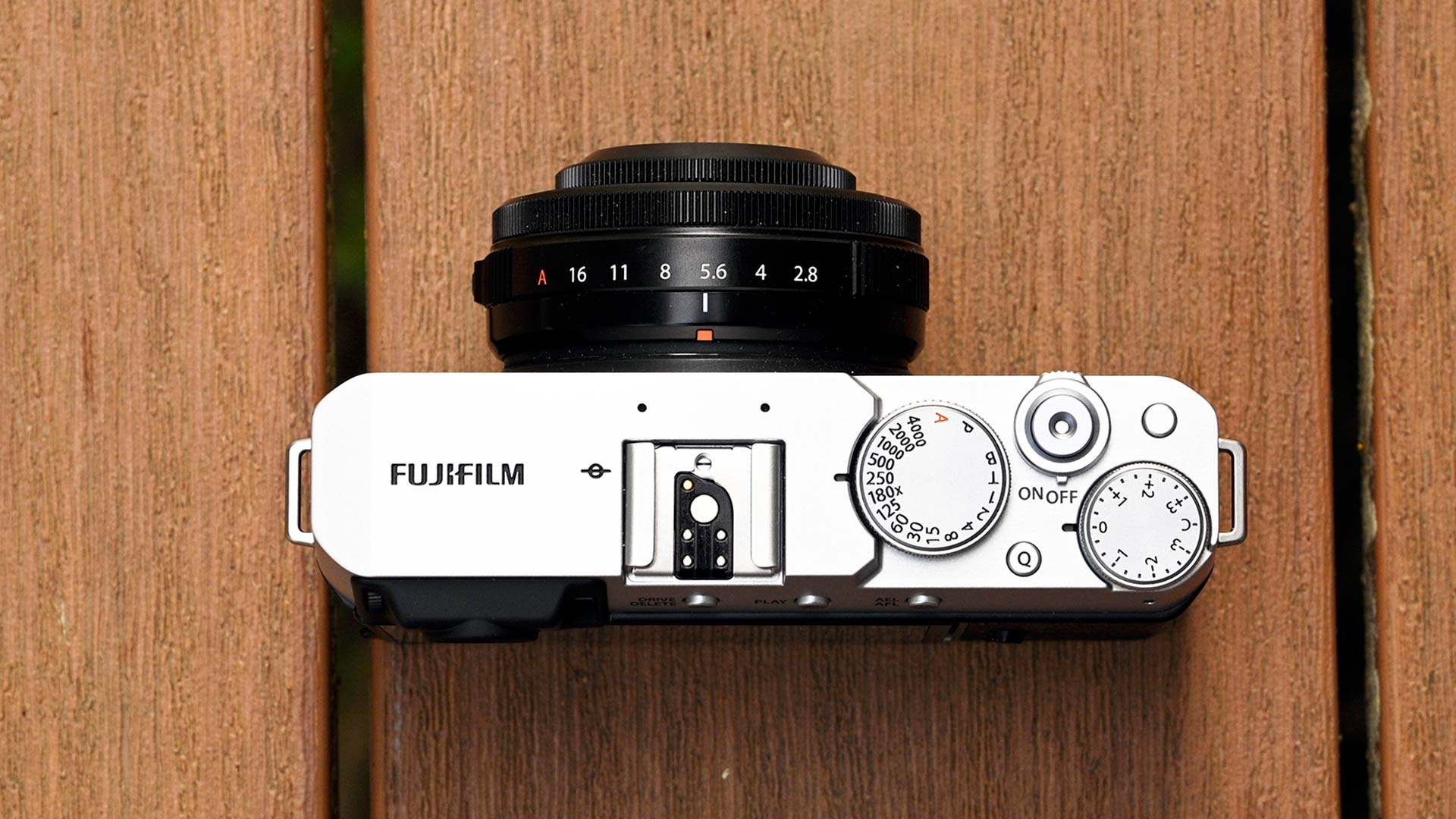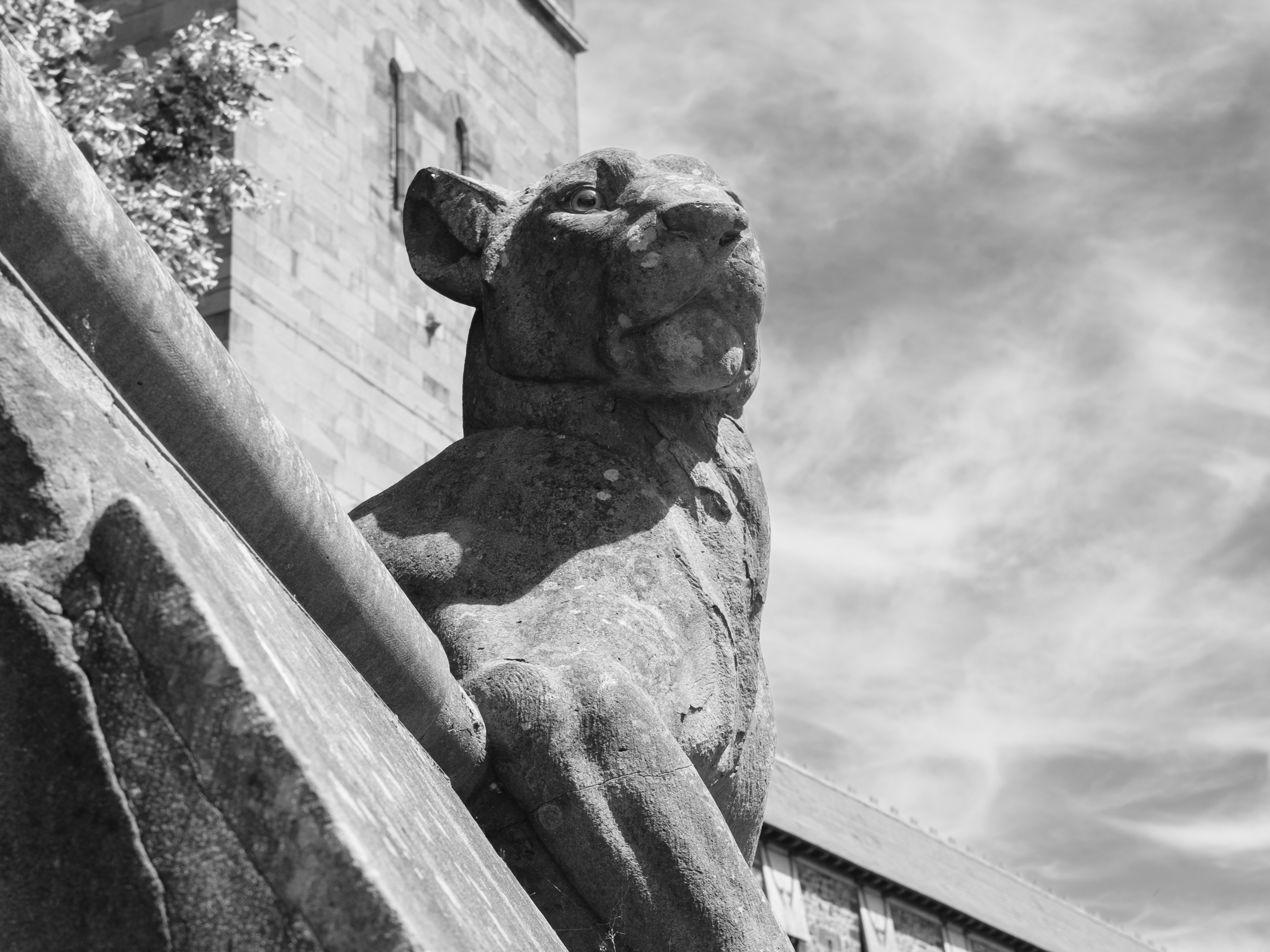The Fujifilm X-E4 wasn’t the camera I wanted — but I’m so glad I bought it
I picked up the Fujifilm X-E4 in a bargain bin and couldn’t be happier with my “downgrade”

The Sony A7 is like an MCU film. Nobody needs to see another, but when a new one comes out, people still lose their minds. This, I believe, has fostered lots of people buying Sony’s flagship camera that probably didn’t need to.
Professionals aside, I’m willing to wager that most of the people who bought or buy either the A7 III or A7 IV need one about as much as anyone needs to watch Benedict Cumberbatch prance around with a giant upturned collar. And if you’re one of those people, it’s fine to admit it. You spent too long on YouTube, watched too many Dunna Did It videos and got suckered into believing you absolutely and unquestionably require a £2,600/$2,700 camera. You probably don’t. But it’s fine. I was one of those people too.
Now, I did actually need some of the features of the Sony A7 III — one of the best cameras around — for commissions and exhibition work when I upgraded from my original A7 a few years back. But if I’m honest with myself, I wasn’t ever utilizing that camera’s full potential. It was always overkill for my needs. And after prioritizing journalism over photography in the intervening years, I realized recently that my A7 III had graduated from being mostly to totally surplus in terms of the features I needed. Not only that, but over time I’d noticed its excess of features and photography aids had also started sucking some of the life and fun out of my photography. Long story short, it was time to sell up and downgrade. But to what?
Fujifilm X-E4: The camera I didn’t want
The Sony will give you everything you need, whenever you need it, which is something you probably never really need. You’ll map every function you could ever use to a button, ring or dial. You’ll get many-axis IBIS, god-tier auto-focusing and enough ISO extendability to negate an eclipse. But while these paper figures sound good in a spec-swinging contest, if you don’t rely on these features for professional purposes, having them can result in the enjoyable challenge of photography becoming lost. Add to this the obligation I personally felt every time I went shooting to drag around and use all the expensive kit and peripherals I’d bought — overweight zooms; lighting; a smorgasboard of ND filters — and the fun I once experienced had almost entirely disappeared.

To remedy this, I wanted something a little simpler. A Fuji, and specifically the X-T30 II. Light and unfussy, it felt like a more honest tool to snatch for spur of the moment street sessions, with fewer features and controls to end the compulsion for “perfect” shots every time. It has a good sensor, a well supported lens mount and strong black and white profiles (I’m a mono photographer). At roughly £1,000 all in, it was touching budget, and looks-wise would match the Nikon FG on my kit shelf. As things panned out, though, this wasn’t to be my next camera.
What I ended up with instead was the Fujifilm X-E4: a camera I didn’t want, but snatched up at an incredible price. I found my X-E4 + XF 27mm F2.8 in a department store fire sale with hundreds off the MSRP thanks to a lightly scuffed box. At that price, I couldn’t really say no, and if I didn’t like it I could easily sell it for an enormous profit. There was an original X-T30 in the bargain bin too, but a split-second choice needed to be made to beat the other circling gannets. I went based on the X Trans 4 sensor, which also resides in the flagship X-T4. Hopes were thus high. After a few early playabouts with the camera, however, I was feeling pretty disappointed.
A minimalist experience
At first glance, the X-E4 seemed like a poser’s camera. Core features-wise, it’s fine, given its price range. What concerned me early on, though, was its UI.
Get instant access to breaking news, the hottest reviews, great deals and helpful tips.
Fuji describes this camera as “easy to use,” marketing it as a streamlined experience that “makes changing settings easy.” This isn't quite true.

Firstly, there’s the lack of function buttons. The X-E4 has one. There are four assignable screen gestures, too, but I’ve found these unreliable enough that I map one function to two gestures, ensuring my sausage fingers always hit the mark. This leaves me with two screen gestures and one button, so three only custom maps in total.
I wanted stripped back, but boy, Fuji took that ethos to extremes here. The end product is an interface that’s extremely difficult to use and navigate at first, resulting in a fair bit of menu hopping.
Then there’s the lack of a decent ISO dial. Instead of a chunky top-mounter, you’re left using a fiddly wheel on the front, which changes function when accidentally knocked inwards or nudged the wrong way (very easy to do). Add on the absence of the aforementioned function buttons and a focus control switch, as you’d find elsewhere in Fuji’s lineup, and there’s a feeling that they stripped this camera of some of its basic functionality, yet added in a flip up screen for vloggers and selfie takers. Even though it featured the X Trans 4 sensor, was this really a camera designed for serious enthusiast photography, or one intended to look good but sit on full auto?
As it happens, it’s the former.
The perfect kind of challenge
What changed for me was actually going out and using the X-E4 in anger. I toyed around at home, theorized about the pitfalls of the UI and so on, but you have to use a camera to figure it out.
Much to my relief, after a few days of street photography, I came back with a markedly better understanding of what this camera is all about. It’s a street camera, obviously, as demonstrated by its outrageously small and lightweight form factor. But it’s a street camera designed exactly for people like me, who have some experience under their belt and simply want some fun.
The lack of mappable buttons are all part of this, I now understand. They force you to truly consider what functions you need and what you don’t, to forget about everything else and get on with taking pictures. After an hour, I figured I needed virtually none of the bells and whistles of my A7 III. I didn’t need zebra mode, focus peaking, nor to switch to Animal Eye AF (which the X-E4 doesn’t have). In reality, I required only back button focus and to switch between AF modes, so I remapped my AEL button and mapped my function button to suit. My nice-to-haves were profile switching and eye AF toggle when I fancied shooting a street portrait, which I assigned to the screen. And that’s it.

Sure, sometimes I need a function that I don’t have, but in those moments I’m forced to take my time navigating the settings menu or to find a creative way around the problem, sometimes even changing how or what I’m shooting instead. Meanwhile, the smaller APS-C sensor and mid-range field of view of the 27mm (43.2 full frame equivalent) has forced me to spend more time considering compositions — on a full frame camera with a wide angle zoom, I'd often rely on the large field of view to find and crop to a composition in post. I've found myself going back to basics with this camera, focusing more on light, shadows and contrast without the distractions of bells and whistles
All in, it’s a challenge, but an interesting and rewarding one.
The ISO dial issue? Not a problem in reality, which speaks to how incredibly good this camera is at taking pictures. On auto ISO, the X processor in the Fuji simply does not miss a beat. Limited to ISO 6400, not once in around a thousand images have I been disappointed by major blowouts from the auto ISO. In fact, thanks also to the beautiful Acros profile and flawless image quality of the X Trans 4, I now often settle for in-camera JPGs, something I previously considered heresy.
The X-E4 then, far from being a camera for beginners, is actually an ideal choice for any intermediate or experienced photographer who wants a radical switch up from the technological safety net they’ve built around themselves. It’s an exigent little thing, forcing you to reflect on what’s important to you in your photography, and often leaving you short. But it’s that challenge which makes it so much fun, and which will probably make you a better photographer. What has ended up happening, I suppose, is that with my bargain bin X-E4, I accidentally bought the perfect camera for me.

Peter is a Senior Editor at Tom's Guide, heading up the site's Reviews team and Cameras section. As a writer, he covers topics including tech, photography, gaming, hardware, motoring and food & drink. Outside of work, he's an avid photographer, specialising in architectural and portrait photography. When he's not snapping away on his beloved Fujifilm camera, he can usually be found telling everyone about his greyhounds, riding his motorcycle, squeezing as many FPS as possible out of PC games, and perfecting his espresso shots.
